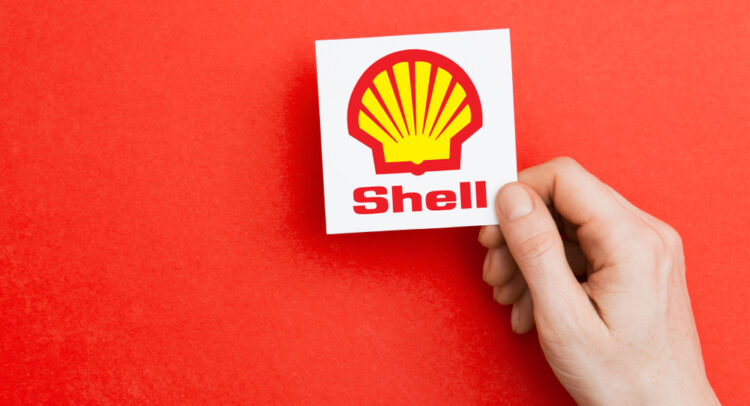Shell PLC (GB:SHEL), one of the world’s largest oil companies, has long been synonymous with reliability and innovation in the energy industry. Headquartered in London, Shell has operations in around 70 countries worldwide, including exploration, production, refining, and distribution.
Throughout its history, Shell has weathered numerous storms, from geopolitical conflicts to volatile oil prices and environmental controversies. Yet, the company has consistently demonstrated resilience and adaptability, evolving with the times to meet the changing needs of society and the energy market.
In recent years, Shell has embarked on a journey of transition to a new era targeting net-zero emissions, prompting a fundamental shift in its strategy and operations. The growing urgency to address climate change, the rise of renewable energy, and the shift towards sustainable practices have all placed pressure on Shell to reduce its reliance on fossil fuels and embrace cleaner alternatives.
Let’s take a look at more details.
Shell’s Response to Climate Change
In response to these challenges, Shell has begun its transformation with the ambition to become a net-zero emissions energy business by 2050 or sooner. To achieve this ambitious target, Shell has outlined a comprehensive strategy that includes a wide range of initiatives.
As part of its energy transition, Shell is investing $10-15 billion between 2023 and 2025 in low-carbon energy solutions. The company invested around $5.6 billion in 2023 in low-carbon solutions, including electric-vehicle charging, biofuels, renewable power, hydrogen, and carbon capture and storage.
Shell’s Transition Strategy Update 2024
According to its March 2024 update, at the end of 2023, Shell had already achieved 60% of its goal to halve scope 1 and 2 emissions from its operations by 2030 compared to 2016 levels.
However, it is worth noting that the company cut down its 2030 carbon reduction target, attributing this decision to anticipated robust gas demand and uncertainties surrounding the energy transition. Under its revised goals, the company is targeting a 15% to 20% reduction in the “net carbon intensity” of its energy products by 2030, down from the previous aim of 20%. Additionally, Shell abandoned its 2035 target to decrease the net carbon intensity of its energy products by 45%.
Likewise, Shell’s British rival BP PLC (GB:BP) also slowed down its plans to cut its emissions in 2023, triggering criticism from climate activists. In February 2023, BP revised its plans to cut down on its oil production, now targeting a reduction of only 25% from 2019 levels, in contrast to the earlier goal of a 40% reduction. Additionally, BP has scaled back its aspirations to decrease emissions from fuels distributed to customers to a range of 20% to 30% by 2030, down from the earlier target of 35% to 40%.
However, these companies remain committed to achieving net zero emissions by 2050.
Shell Faces Investor Pressure on Climate Targets
Despite its multiple efforts, Shell faces significant challenges on the path to sustainability. The transition to renewable energy is filled with complexities, including technological barriers, regulatory uncertainties, and market dynamics.
Earlier this year, at its annual meeting, Shell faced severe backlash from 27 investors, led by Europe’s largest asset manager, Amundi, demanding enhanced environmental targets. The activist group Follow This, on behalf of investors, has urged Shell to sync its emissions objectives with the Paris Agreement’s goals to restrict global warming. Follow This is also urging the company to incorporate the accounting of all emissions linked to the use of its products by customers, known as scope 3 emissions.
The Paris Agreement, adopted in 2015, is a binding global treaty aimed at addressing climate change. It was recognized by 196 parties at the UN Climate Change Conference in Paris, France.
Is Shell a Good Stock to Buy?
In terms of price appreciation, analysts hold a bullish take on Shell stock. After the release of its Q1 results for 2024, many analysts have confirmed their rating, including nine Buy recommendations. Analysts praise the company’s commitment to its shareholder returns. In 2023, total shareholder distributions surged to $23 billion, comprising $8 billion in cash dividends and $15 billion in share buybacks. Shell’s total dividend for 2023 increased to $1.29 per share, marking a 25% growth from 2022.
Moreover, along with its Q1 results released in May, Shell unveiled an additional $3.5 billion share buyback initiative expected to conclude within the next three months.
Overall, SHEL stock scores a Strong Buy consensus rating on TipRanks, presenting a long-term buying opportunity for investors. This includes 10 Buy and two Hold recommendations. The Shell share price target of 3,196.04p implies a 9% increase on the current price level.

Conclusion
Shell remains well-equipped to navigate the challenges of energy transition and build a more sustainable future. By leveraging its expertise, resources, and global reach, Shell could lead the way toward a greener, cleaner, and more resilient energy system.









